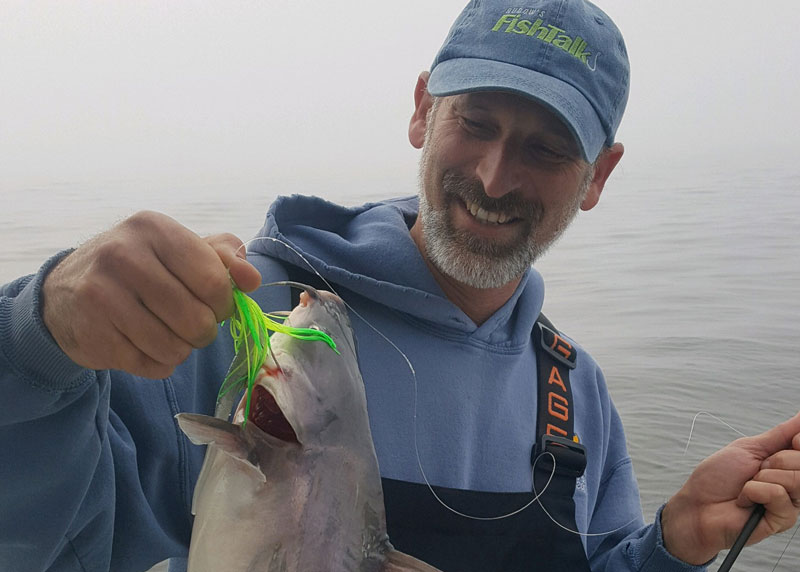I’m a big fan of eating the fish I catch, even though my extensive mathematical computations show that dinner usually ends up costing me something like $367 per pound. That may seem like a lot to pay for a “desirable” food-fish, much less a catfish. And these days, up and down the Chesapeake catfish have become common fare. Still, we all make do with what we have available to us and this season I’ve had an awful lot of people ask me if I keep and eat the catfish I catch on the Bay, and how I cook them. The answer is a firm “yes I do eat them,” and if you follow this format, you’ll find that dissing them is a mistake – those fat cats are plenty tasty.

* Dip the fillets in scrambled egg then roll them in corn meal seasoned up with a bit of Old Bay and garlic salt. Fry them in hot oil, and serve on a bun with lettuce and tomatoes.
Catfish are, of course, only one of the many “undesirable” fish we catch in the Bay which are actually quite good to eat. Another vastly under-rated dinner-fish is the northern puffer. We catch plenty of these yellow, green, and white puff-balls here, not to be confused with the poisonous varieties caught in foreign waters. Their meat is sweet and firm, though filleting them can be a bit of a chore (slice open the skin on either side of the dorsal, peel it back, and slice the two backstraps off from the top-down). The next time you find a balloon-like fish swinging from the end of your line, try this recipe and you’ll discover that they’re amazingly tasty – and that’s no inflated claim.
* Place four to six puffer chunks per person in a Pyrex dish, and baste them down with a mix of melted butter and Old Bay. Bake at 350 until done, then give ‘em a squirt from a lemon wedge before serving.
Many people pursue spot, but think of them only as baitfish. In fact, spot are quite tasty. Years ago when we caught true jumbo spot in the two-pound range we considered them a prime target. The next time you catch some big enough to eat, toss ‘em on ice and then try this:
* Skin and fillet the fish, then place the meat in a baking dish. Open a can of Campbell’s mushroom soup (but do not mix in the recommended amount of water). Baste the fish with the condensed soup, and layer in more mushrooms (Shitakes are awesome for this). Bake at 350 until the soupy mix bubbles and browns on top, and the fish’s meat flakes easily.
What about cownose rays? I’ve been told by plenty of people that they taste okay when first soaked in milk, or if they’re smoked. I’ve tried both methods and decided I’d rather toss the large winged creatures back over the side, even though it causes my cost-per-pound ratio to skyrocket. Sea robins? That species is on my must-try list, since I heard someone say they were surprisingly good to eat recently. Then again, I’ve also been told by a couple of people that toadfish taste pretty good. Last summer when I tied into some monster toads I threw ‘em on ice and figured out how to dissect them. Turns out those people were wrong. Very, very wrong.
MRIP Update
Last month we pointed out some depressingly poor “science” being used by the Marine Recreational Information Program (MRIP). Around that time NOAA opened a public comment period regarding MRIP and re-issued a policy directive regarding transitioning to a new or improved data collection design. We alerted FishTalk readers to this development in Angler Input Needed and encouraged you to make comments via our website, but due to the 45-day comment period and our (over 45 day) publishing schedule, couldn’t get these developments into the print version of FishTalk. The comment period is now closed, but we at FishTalk would like to specifically thank the powers that be at NOAA for recognizing the issues with MRIP, allowing for public comment, and responding to the recreational fishing community’s concerns. We will keep you posted as further developments regarding this issue evolve.